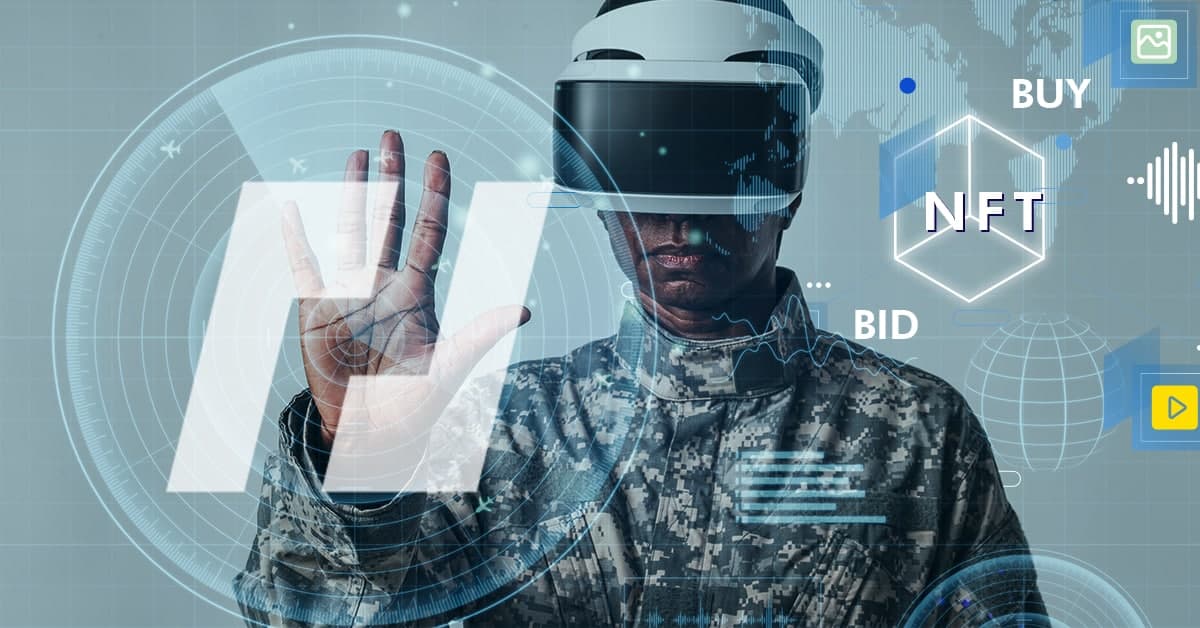Top 10 Things You Need To Learn About Metaverse Virtual Reality
Imagine using a virtual reality headset to “attend” a business meeting anywhere.
This is made possible by deploying the Metaverse, an artificial world that mixes augmented and virtual reality technology.
Here are ten things you must understand about the Metaverse and its relationship to the future of work to realize how it works and why it is significant.
The pandemic has profoundly impacted the global workforce, dramatically changing how we work, where we work, and the tools we use to be productive. One of the most prominent technological advancements during this period is the Metaverse. The Metaverse is a digital universe that combines virtual and augmented reality to offer a completely immersive experience.
This technique was initially used on several gaming platforms.
- The Metaverse is an artificial universe made possible by augmented reality and virtual reality technology.
While wearing a virtual reality headset, you may “attend” a corporate function or even a virtual concert, precisely as if you were in attendance in person. People may interact with one another in a more immersive way due to the Metaverse, which produces a comparable three-dimensional experience to the current world.
It combines the real and virtual worlds, offering users a 3D space where they may socialize, do business, buy, and do anything else conceivable on the Internet and more. The Internet has a physical form, to use a phrase popularised by Mark Zuckerberg.
- The Metaverse is accessible to all individuals.
Interoperability refers to the seamless transmission of data across diverse computer systems and is one of the critical building blocks of the “metaverse.” The Metaverse is a virtual environment that can communicate with other virtual worlds. It is not as tough as you would imagine it to access the Metaverse.
The Metaverse is accessible to almost everyone in the same way that the Internet is accessible to nearly everyone. You can access the Metaverse if you have access to a virtual reality headset. However, a VR headset costs around $300, so be prepared to commit. To enter the Metaverse, you will need to obtain the necessary software. One of the most popular decentralized metaverse games, The Sandbox, is one of the programs you will need to download. It enables users to design, build, and make money from the virtual environments they create in the digital realm.
The Metaverse: Don’t Confuse It With Virtual Reality https://t.co/wyxfd3afFo
— Patrick Bucquet | pbucquet.eth (@pbucquet) August 14, 2022
- The Metaverse may be used for many reasons, such as travel, gaming, and work.
The Metaverse is a realm where many possibilities exist (all virtually, of course). Proponents of the Metaverse anticipate that its users will engage in various activities, including working, playing, gaming, and maintaining links with friends by attending concerts, conferences, and virtual trips worldwide.
- The participants’ participation in the Metaverse will both cost and earn them money.
Cryptocurrency-powered decentralized virtual economies are available to Metaverse participants (such as SENSO, which is exclusive to Sensorium Galaxy). This includes online marketplaces where users can buy and sell digital exchange assets such as avatars, virtual clothing, non-fungible tokens (NFTs), and event tickets. The Metaverse is comparable to a large sum of money. According to some estimates, the annual revenue opportunity for virtual worlds might be worth as much as one trillion dollars. This includes potential in advertising, digital events, and online commerce.
- You may own property in the Metaverse and even sell it.
Many people are exploring acquiring digital property as an asset whose value will increase. The value of Metaverse coins has surged dramatically. As a result, real estate ownership inside a metaverse game has the potential to provide a positive return on investment. The Sandbox, Decentraland, and Cryptovoxels are three of the most desirable pieces of land for sale in the Metaverse, and they may all be acquired via OpenSea.
After selling a virtual estate for $2,400,000, Decentraland achieved yet another metaverse record.
- No one has the right to claim control of the Metaverse.
A single corporation or platform does not control the Metaverse; instead, it is jointly owned by all platform users, who may also exercise control over their personally identifiable information.
The World Wide Web Consortium (W3C) is responsible for setting the Metaverse’s standards. The World Wide Web Consortium (W3C) is led by the inventor of the Internet, who has never sought to profit unduly from his creation: Tim Berners-Lee. On the other hand, no creator of the Metaverse seems to exist.
- The Metaverse may not be as difficult as you believe.
Because blockchain technology guarantees that all transactions inside a virtual world are public, easily monitored, and secure at all times, the Metaverse may be considered financially secure.
The emergence of the Metaverse will expand the number of possible computer security access points. It is feasible that this dynamic may change as platforms fight for users’ attention while the underlying systems continue to serve as the primary targets for data theft.
When avatars are used as a form of identity, the individual and their personal information become susceptible to being replicated, stolen, destroyed, or altered. This is because avatars are digital representations of actual people. In contrast, biometric identification may provide a solution soon.
Also, read: Will Facebook win the Metaverse race?
- The Metaverse will undoubtedly have an impact on the way we do business.
Many of us already incorporate online employment into our daily routines. Considering that Facebook has previously offered Horizon Workrooms, the Metaverse would be a continuation. Other computer giants, such as Microsoft, are following suit, and we may assume that more companies will soon strive to send their staff into the Metaverse.
In less than ten years, virtual reality (VR) will be used in 23 million locations worldwide, marking the beginning of humanity’s admission into the Metaverse. If some common standards and protocols linked several virtual worlds and augmented realities into a single open metaverse, people would be able to collaborate more efficiently and waste less time. Similar concepts to those found in the Metaverse could aid individuals and society in better organizing our operations.
- The technology behind blockchain is crucial to the construction of the Metaverse.
The blockchain technology for the Metaverse is still being developed, but the concept behind this digital world is somewhat advanced.
Blockchain technology is advantageous in six core metaverse areas, including digital proof of ownership, digital collectability, transfer of value, governance, accessibility, and interoperability. However, what exactly does a blockchain entail?
A shared and immutable ledger facilitates the recording of transactions and tracking of assets in a business network. An asset may be tangible (such as a house or car) or immaterial (such as cash or land) (intellectual property, patents, copyrights, branding). A blockchain network enables the monitoring and transaction of almost anything of value, which reduces the related risks and costs for all parties. The blockchain’s underlying decentralized ledger technology is transparent and efficient, making it a logical fit for the Metaverse.
- At this time, the Metaverse has not yet arrived.
It will probably take years, maybe at least ten years, before the Metaverse is completely functioning. There are still several technological challenges that must be overcome, the first of which is the lack of an internet infrastructure capable of supporting the simultaneous usage of the Metaverse by millions or possibly billions of individuals. This is simply one of the several technological obstacles that must be overcome.
Due to the ongoing development of technologies such as 5G and edge computing, they are now incapable of meeting the needs of a complex infrastructure such as a metaverse. The Metaverse requires a connection to the Internet that is consistent and uninterrupted. Because the Metaverse is not meant to resemble a virtual world filled with flaws, this is the case.
Stay informed with daily updates from Blockchain Magazine on Google News. Click here to follow us and mark as favorite: [Blockchain Magazine on Google News].
Get Blockchain Insights In Inbox
Stay ahead of the curve with expert analysis and market updates.
latest from tech
Disclaimer: Any post shared by a third-party agency are sponsored and Blockchain Magazine has no views on any such posts. The views and opinions expressed in this post are those of the clients and do not necessarily reflect the official policy or position of Blockchain Magazine. The information provided in this post is for informational purposes only and should not be considered as financial, investment, or professional advice. Blockchain Magazine does not endorse or promote any specific products, services, or companies mentioned in this posts. Readers are encouraged to conduct their own research and consult with a qualified professional before making any financial decisions. The featured image used is just a creative depiction of the title and it does not intend to hurt sentiments of any person or institution. If it hurts anyone sentiments, please do not hesitate to reach out to Blockchain Magazine.

 Bitcoin
Bitcoin  Ethereum
Ethereum  XRP
XRP  Tether
Tether  Solana
Solana  Dogecoin
Dogecoin  USDC
USDC  Cardano
Cardano  Lido Staked Ether
Lido Staked Ether  TRON
TRON  Chainlink
Chainlink  Avalanche
Avalanche  Sui
Sui  Wrapped stETH
Wrapped stETH  Wrapped Bitcoin
Wrapped Bitcoin  Toncoin
Toncoin  Stellar
Stellar  Hedera
Hedera  Shiba Inu
Shiba Inu  Polkadot
Polkadot  WETH
WETH  LEO Token
LEO Token  Litecoin
Litecoin  Bitcoin Cash
Bitcoin Cash  Hyperliquid
Hyperliquid  Bitget Token
Bitget Token  Uniswap
Uniswap  Official Trump
Official Trump  USDS
USDS  Wrapped eETH
Wrapped eETH  Pepe
Pepe  NEAR Protocol
NEAR Protocol  Ethena USDe
Ethena USDe  Aave
Aave  Aptos
Aptos  Internet Computer
Internet Computer  Ondo
Ondo  WhiteBIT Coin
WhiteBIT Coin  Ethereum Classic
Ethereum Classic  Monero
Monero  Mantle
Mantle  Cronos
Cronos  POL (ex-MATIC)
POL (ex-MATIC)  Render
Render  Dai
Dai  Algorand
Algorand  OKB
OKB  Artificial Superintelligence Alliance
Artificial Superintelligence Alliance 




